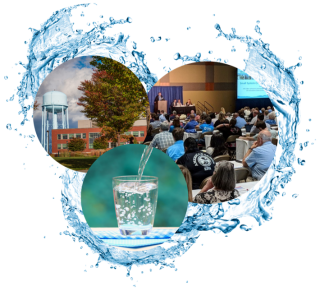20th Annual EPA Drinking Water Workshop: Session 4B

Methods and Analytics
Track B: Source, Treatment, and Operations
Presentation summaries and speaker and moderator biographies for Session 4B of the 20th Annual EPA Drinking Water Workshop.
September 12, 2023 from 3:30 to 5:15 p.m. ET
See the full workshop agenda for all sessions.
Moderator:
Michael Finn, P.E. | EPA Office of Water
Mike is an environmental engineer with EPA's Office of Groundwater and Drinking Water, Targeted Community and Compliance Assistance Branch. He is currently working with states and public water systems on the implementation of the Surface Water Treatment Rules, the Disinfection Byproducts Rules, the Groundwater Rule, and the Lead and Copper Rule, as well as microbial and other contaminant treatment issues, alternative treatment technologies, and potable water reuse. Mike has 30 years of experience in public water supplies and drinking water treatment and serves as a national subject matter expert in the areas of disinfection and microbial treatment of drinking water. He is a licensed professional engineer in California and Maryland and a certified water treatment operator.
Manganese: Biological Treatment and Distribution System Monitoring
Manganese is listed on Contaminant Candidate List 5 and is undergoing regulatory review. It poses a health concern at higher concentrations due to potential neurotoxic effects, whereas it is an aesthetic issue at lower concentration due to the staining and discoloration it causes. This presentation will discuss manganese treatment approaches, demonstrate treatment performance achieved by biofilters treating groundwaters containing manganese up to 200 µg/L, and assess removal across the depth of the biofilter units. Additionally, how water quality throughout the distribution system changes when the water entering the system changes from having very high to very low manganese will be assessed. Monthly sampling before and after the change at a full-scale system showed that manganese concentrations throughout the system were much lower after the change. However, release of accumulated manganese occurred for 1-6 months at different locations within the distribution system. Removing manganese along with distribution system management strategies can decrease manganese concentrations at customers’ taps.
Asher Keithley, Ph.D. | EPA Office of Research and Development
Asher is an environmental engineer with EPA’s Office of Research and Development, Center for Environmental Solutions and Emergency Response, Water Infrastructure Division in Cincinnati, Ohio. Their work focuses on aerobic and anoxic biological drinking water treatment processes for organic and inorganic contaminants, such as ammonia, manganese, and nitrate. Asher holds a Ph.D. in civil engineering and an M.S. in environmental resources engineering from the University of Texas at Austin and a B.S. in civil engineering and a B.S. in theology from the University of Notre Dame.
Lithium Removal
This presentation will provide an overview of lithium chemistry and occurrence information. Using past EPA treatment studies, the removal of lithium through a variety of treatment process will be reported. Specifically, treatment processes include ion exchange softening, lime softening, conventional treatment, and iron/manganese removal. The challenges associated with lithium treatment will be discussed.
Darren A. Lytle, Ph.D., P.E. | EPA Office of Research and Development
Darren is an environmental engineer with EPA's Office of Research and Development, Center for Environmental Solutions and Emergency Response in Cincinnati, Ohio. Since beginning work at EPA in 1991, his primary goal has been to research the quality of drinking water. Over the years, he has investigated and published works on drinking water systems, including work on distribution system corrosion control and water quality (e.g., red water control, lead and copper corrosion control); filtration (emphasis on removal of particles, and microbial contaminants and pathogens from water); biological water treatment; and iron and arsenic removal. Darren holds a Ph.D. in environmental engineering from the University of Illinois, an M.S. in environmental engineering from the University of Cincinnati, and a and a B.S. in civil engineering from the University of Akron.
Arsenic Refresher
Proactive drinking water utilities are seeking streamlined approaches to monitor and mitigate harmful algal blooms (HABs) and taste and odor compounds (T&O). There is no single method that answers all the fundamental questions needed to make determinations on the source of HABs and T&O compounds, their concentrations, and to make treatment decisions. By using an integrated approach of sensory and analytical analyses, utilities can detect blooms and T&O events early to make treatment decisions before problems become too large to easily mitigate. This presentation will review a brief history of T&O analysis, major sensory and analytical chemistry methods, and recent advances in T&O monitoring such as the addition of the Attribute Rating Test to Standard Methods and the revision of Standard Method 6040D to include 20 T&O compounds, along with recent advances in treatment optimization for T&O compounds.
Simoni Triantafyllidou, Ph.D. | EPA Office of Research and Development
Simoni is an environmental engineer with EPA's Office of Research and Development, Center for Environmental Solutions and Emergency Response in Cincinnati, Ohio. Her research interests include aquatic chemistry, corrosion science, drinking water quality/treatment, sustainable drinking water infrastructure (premise plumbing/distribution systems) and public health. Simoni has authored/co-authored more than 30 publications on various scientific aspects of these research areas. At EPA, she is primarily conducting research on metallic corrosion and inorganic contaminants in drinking water. Simoni holds both a Ph.D. and an M.S. and in environmental engineering from Virginia Tech and is the chair of AWWA’s Committee, Premise Plumbing: Beyond the Meter. She is the recipient of First Place M.S., Thesis Awards by the Association of Environmental Engineering and Science Professors (AEESP) and by the American Water Works Association (AWWA), an Outstanding Ph.D. Dissertation Award by AEESP, and Best Paper Awards from the journals Environmental Science and Technology, Journal AWWA and AWWA’s Opflow Periodical.
Disclaimer: The views expressed in these presentations are those of the authors and do not necessarily represent the views or policies of the U.S. Environmental Protection Agency. Any mention of trade names or commercial products does not constitute EPA endorsement or recommendation for use.
